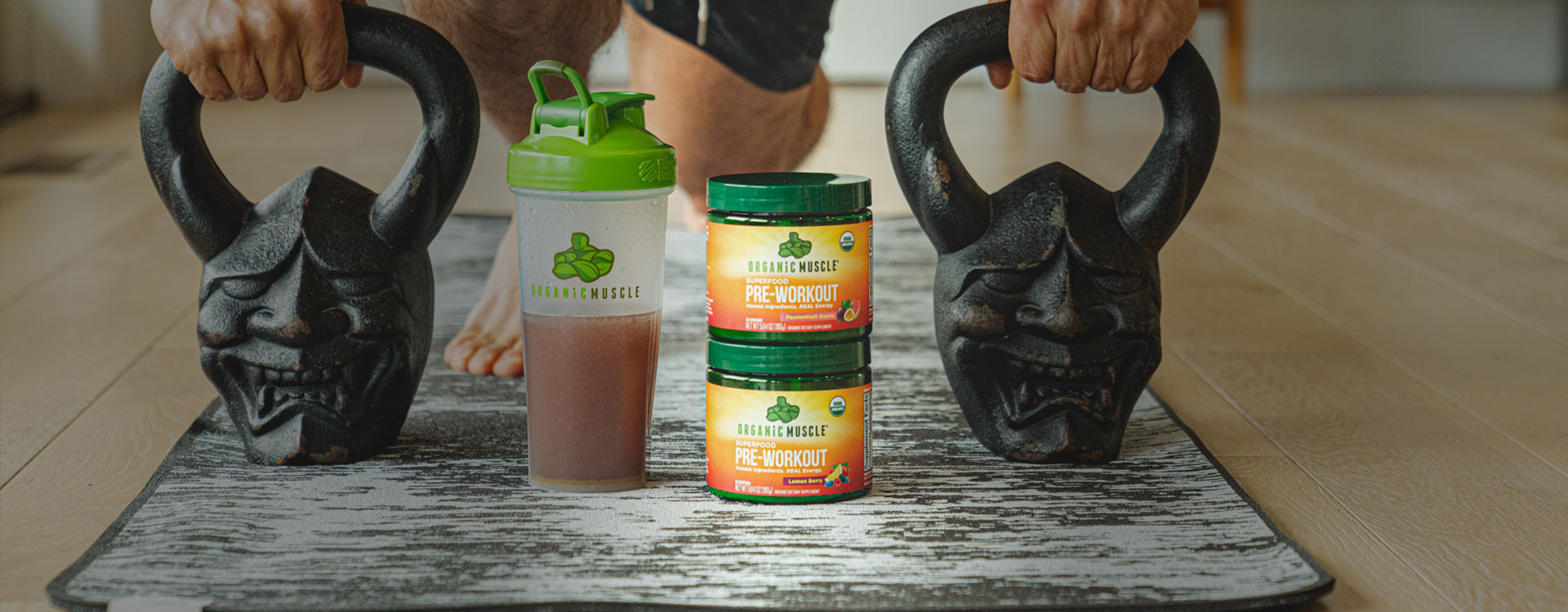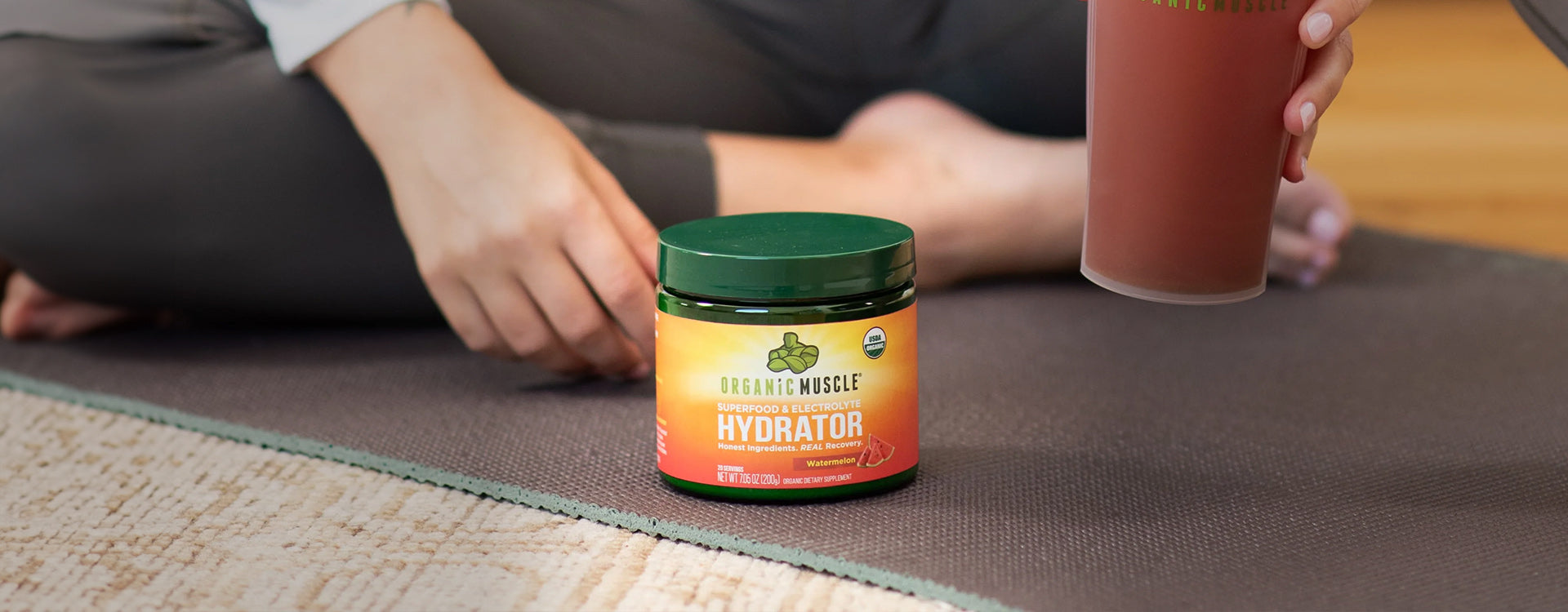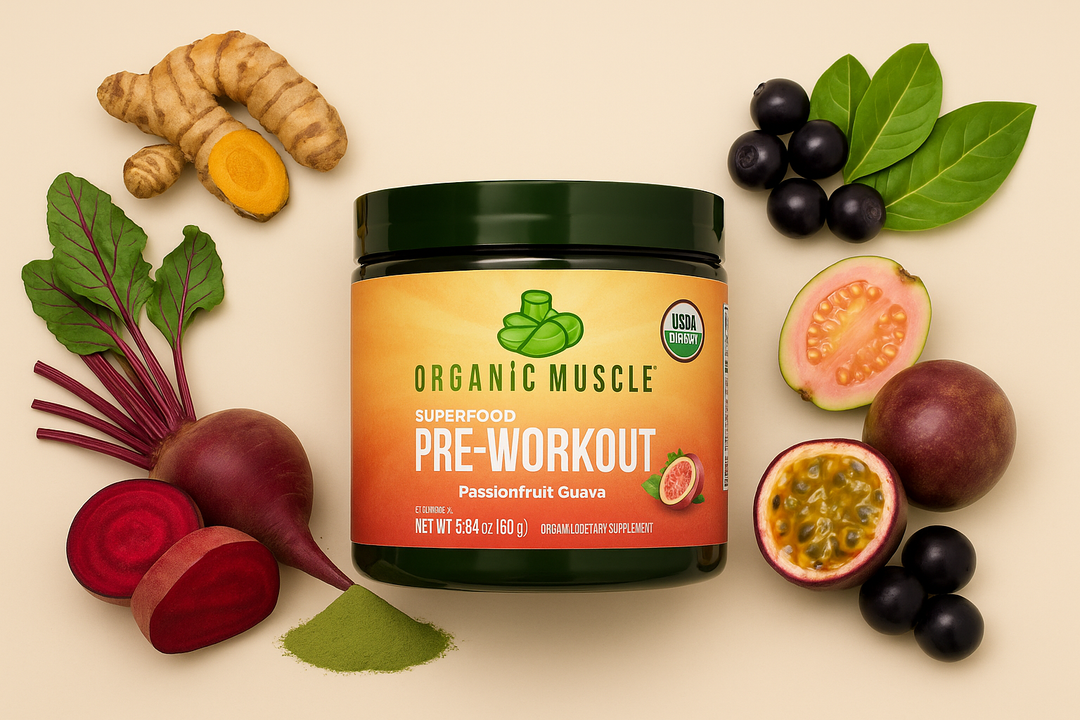Key Takeaways:
- Importance of Forearm Strength: Forearm workouts are essential for enhancing grip strength, which translates into improved performance across various fitness activities and sports, such as lifting, climbing, and martial arts.
- Functional Benefits Beyond Aesthetics: Strong forearms improve daily functionality, contributing to better dexterity and endurance in everyday tasks while also reducing the risk of injuries like tendonitis and carpal tunnel syndrome.
- Diverse Training Regimen: Integrate a variety of forearm exercises (e.g., wrist curls, farmer's walks, dead hangs) and utilize proper form, gradual intensity increases, and rest periods to optimize strength gains and prevent injuries.
If you're serious about elevating your fitness game, it's time to shift your focus to your forearms. Often neglected, forearm strength is crucial not only for improving your grip but also for enhancing your overall performance in various lifts and sports. Whether lifting heavy weights, playing sports, or simply looking to add definition to your arms, developing powerful forearms is non-negotiable.
In this article, we’ll reveal the best forearm workouts to help you build impressive grip strength and explosive power. These workouts are designed to deliver results, from targeted exercises that isolate the forearms to functional movements that engage your entire upper body. Say goodbye to weak grip issues and hello to increased performance and confidence in every lift.
Why Forearm Workouts Are Key To Supercharging Your Grip Strength
Forearm strength is not just about aesthetics; it's the cornerstone of a powerful grip and, by extension, an enhancement of your overall athletic performance. Incorporating focused forearm workouts into your exercise regimen can significantly supercharge your grip strength. This, in turn, translates into improvements across various fitness activities, from lifting heavier weights in the gym to performing better in sports that require hand strength, such as climbing, martial arts, and golf.
The muscles in your forearms control the movement of your fingers, wrists, and elbows. Strengthening these muscles through targeted exercises leads to a firmer grip, which is essential for pulling and lifting movements. Moreover, a strong grip contributes to endurance, allowing you to hold onto weights or other equipment for longer periods without fatigue. This is vital for weight training and everyday activities, elevating functional fitness levels.
Benefits Of Strong Forearms: Beyond The Gym
Strength in the forearms is not merely an aesthetic achievement; it's a functional asset that enhances performance in various spheres of daily life and sports. The benefits of developing strong forearms transcend the confines of the gym, manifesting in improved dexterity, enhanced endurance, and greater upper-body strength.
Enhanced Daily Functionality
Forearm strength plays a crucial role in practically every task involving hand strength, from opening jars to carrying groceries or engaging in activities that require fine motor skills. Strengthening these muscles improves grip endurance, allowing for prolonged activities without fatigue.
Improved Sport Performance
Athletes across a spectrum of disciplines can attest to the advantage strong forearms provide. Whether swinging a tennis racket, gripping a golf club, climbing, or engaging in combat sports, power in the forearms translates to better control, precision, and the ability to apply force more effectively.
Injury Prevention
Developing the muscles in your forearms can have a protective effect, reducing the risk of injuries by providing better support and stability to the wrist and elbow joints. This can be particularly beneficial in preventing common issues such as tendonitis, carpal tunnel syndrome, and repetitive strain injuries that can sideline your fitness goals.
Improved Overall Upper Body Strength
Strong forearms contribute to a solid foundation for building upper body strength. They are involved in compound movements that require pulling or lifting, making them indispensable for a balanced and comprehensive strength-training regimen.
Essential Forearm Muscles And Their Functions
Understanding the anatomy of your forearms is crucial to optimizing your forearm workouts. The forearm contains several vital muscles, each playing a unique role in grip strength and overall power. Here, we delve into the essential forearm muscles and their functions, providing insight into how targeted exercises can enhance grip strength and muscular endurance.
Brachioradialis
This muscle runs from the lower part of the humerus down to the radius in the forearm. It is primarily responsible for flexing the forearm at the elbow.1 When you perform activities that require lifting or curling, the brachioradialis muscles spring into action, assisting in the movement. Strengthening this muscle can significantly enhance your ability to perform curls and other lifting exercises more efficiently.
Flexor Group
The flexor group consists of several muscles on the forearm's anterior (palm side). These muscles, including the flexor carpi radialis, flexor carpi ulnaris, and palmaris longus, are critical for flexing your wrist and fingers.2 They play a significant role in your grip strength, allowing you to clench your fists, grasp objects firmly, and perform wrist curls. Enhancing the strength and endurance of these muscles can greatly improve your grip capability and forearm resilience.
Extensor Group
The extensor group, situated on the posterior (back side) of the forearm, works in opposition to the flexors. This group, comprising muscles such as the extensor carpi radialis longus, extensor carpi ulnaris, and extensor digitorum, is essential for extending the wrist and fingers.3 These muscles facilitate movements such as releasing an object or performing a reverse wrist curl. Strengthening the extensor muscles is key to achieving a balanced forearm workout and ensuring comprehensive forearm development.
Pronator and Supinator Muscles
The pronator teres and pronator quadratus, along with the supinator, are responsible for rotating the forearm, enabling the palm to face up (supination) or down (pronation).4 Activities requiring rotational movements of the forearm and hand, such as opening a jar or using a screwdriver, rely heavily on these muscles. Targeting these muscles in your forearm workouts can enhance your ability to perform rotational movements more effectively.
How To Build Grip Power: The Best Forearm Workouts For Every Level
Building grip power is not just about enhancing your handshake. It's about elevating your overall fitness regime, improving your performance in various sports, and enhancing daily functional movements. Whether you are a beginner or an advanced fitness enthusiast, integrating forearm workouts into your routine can significantly improve your grip strength and power. Here, we delve into the best forearm workouts tailored for every level of fitness experience.
Beginner Forearm Workouts
Wrist Curls
- Sit on a bench with your forearms resting on your thighs, palms up.
- Hold a lightweight dumbbell in each hand.
- Slowly curl your wrists upwards, then lower them back down.
- Aim for 3 sets of 12-15 repetitions.
Reverse Wrist Curls
- Similar to wrist curls but with palms facing down.
- This targets the extensor muscles, balancing the strength on both sides of the forearm.
- Perform 3 sets of 12-15 repetitions.
These exercises can be the cornerstone of your grip-strengthening journey, focusing on the fundamental movements that engage the forearm muscles.
Intermediate Forearm Workouts
Farmer’s Walk
- Pick a pair of moderately heavy dumbbells.
- Stand straight, keep your shoulders back, and walk a distance while gripping the weights.
- The challenge of carrying and sustaining the grip will significantly improve your forearm strength.
- Aim for 3 sets of 1-minute walks.
Hammer Curls
- Stand or sit with a dumbbell in each hand, palms facing towards your body.
- Curl the weights while keeping your thumbs up, resembling a hammering motion.
- This not only works your biceps but deeply engages your forearms.
- Perform 3 sets of 8-10 repetitions.
These workouts add complexity and diversity to your routine, pushing your forearms to adapt and grow stronger.
Advanced Forearm Workouts
Dead Hangs
- Grasp a pull-up bar with both hands and hang freely with your feet off the ground.
- Hold as long as possible to challenge your grip, aiming to increase the time with each session.
- This workout intensely activates your forearm muscles and improves shoulder stability.
Weighted Wrist Roller
- You can use a wrist roller device with added weight or create one using a rope, bar, and weight plate.
- Roll the weight up and down by winding and unwinding the rope with rotational wrist movements.
- This exercise is exceptional for building grip strength and forearm mass.
- Aim for 2-3 sets, rolling both upwards and downwards.
By incorporating these advanced exercises into your regimen, you'll notice significant gains in both grip strength and forearm muscularity, setting a strong foundation for a myriad of physical activities and sports. Remember, progression is key in any fitness journey. Start with the basics and gradually increase the intensity and complexity of the workouts as your strength improves.
Advanced Forearm Workouts For Experienced Lifters
As you progress in your fitness journey, your forearms require more challenging workouts to continue building strength and power. Beyond the basics, these advanced forearm workouts are designed to push your limits and enhance your grip strength.
Climbers Pinch Grip
This exercise simulates a rock climbing grip, challenging your fingers and forearms. Hold a weight plate in each hand using only your fingers and thumb to perform the Climbers Pinch Grip, maintaining a pinch grip. Walk around for a set distance or hold the position for time. This workout strengthens the forearm muscles and improves finger strength and endurance.
Farmers Walk with Fat Grips
The Farmers Walk is a classic grip-strengthening exercise, but using fat grips or towels increases its intensity by further challenging your forearm muscles. Simply attach fat grips to your dumbbells or wrap a towel around the handles, lift them off the ground, and walk a certain distance. This exercise mimics real-life lifting scenarios, improving your grip strength for daily activities and enhancing forearm size and endurance.
Reverse Curls with EZ Bar
The Reverse Curl is a potent exercise for targeting the brachioradialis, a major muscle in the forearm. Using an EZ bar helps maintain wrist stability and maximize the engagement of forearm muscles. Hold the EZ bar with an overhand grip, keeping your hands shoulder-width apart, and curl the bar while keeping your elbows stationary. This movement builds forearm strength and contributes to overall arm aesthetics.
Wrist Roller
The Wrist Roller is a traditional exercise that effectively targets the forearm muscles. To perform it, hold the wrist roller with both hands and roll it to wind up the weight attached to it, then slowly unroll it to lower the weight. This exercise requires a delicate balance of strength and control and provides a comprehensive workout for forearm development.
Static Holds with Heavy Dumbbells
Static Holds are deceptively simple but incredibly effective for building grip strength and forearm muscular endurance. Pick up a pair of heavy dumbbells and hold them at your sides for as long as possible. Aim to increase the time and weight progressively. This exercise enhances your ability to maintain a strong grip over longer periods, a critical aspect of many sports and physical activities.
Incorporating Forearm Training into Your Routine
Integrating forearm workouts into your fitness regimen can enhance your grip strength and power and your overall exercise performance. These specific muscles play a crucial role in various exercises and daily activities, making their development vital for a balanced and effective workout routine.
Start Slow
For individuals new to forearm training, starting slow to avoid strain or injury is pivotal. Beginning with lighter weights and gradually increasing the intensity and volume of your workouts can help your muscles adjust safely. Remember, consistency is key in developing strength over time. Incorporating basic grip exercises two to three times a week can be a good starting point.
Diversify Your Exercises
To maximize the benefits of your forearm workouts, include a variety of exercises targeting different aspects of forearm strength. This approach ensures balanced muscle development and reduces the risk of overuse injuries. Key exercises to consider are wrist curls, reverse wrist curls, hammer curls, and grip squeezes. Incorporating these movements will engage both the flexor and extensor muscles of the forearms, promoting balanced strength and growth.
Incorporate Equipment
Equipment such as grip strengtheners, barbells, dumbbells, and resistance bands can add diversity to your forearm workouts. These tools can help increase resistance and intensity, further challenging your muscles and improving strength gains. Additionally, exercises like farmer's walks or dead hangs from a pull-up bar can be highly effective in building grip endurance and power.
Listen to Your Body
As with any workout routine, listening to your body is critical. If you experience any pain or discomfort beyond normal muscle fatigue, it's important to adjust your training accordingly. Rest and recovery are crucial in muscle development and should not be overlooked. Respect your body's limits, and don't hesitate to consult a fitness professional if you have concerns or need guidance on proper technique.
Tips For Preventing Forearm Injuries
Below are vital tips to ensure your forearm workouts enhance your strength without compromising your well-being.
Start with a Warm-Up
Always begin your exercise regimen with a warm-up session. Dynamic stretches targeting your arms, wrists, and shoulders prepare your muscles and joints for the workout. This step increases blood flow, improves flexibility, and significantly reduces the risk with forearm workouts.
Use Proper Form
Incorrect form can stunt your progress and increase your risk of injury. Whether you're performing wrist curls, reverse curls, or any grip-strengthening exercises, ensure that you're using a weight that allows you to maintain control and proper technique throughout each movement. It's beneficial to consult with a fitness professional to refine your form.
Gradually Increase Intensity
One common mistake is increasing the weight or intensity of your workouts too quickly. Muscles, tendons, and ligaments in the forearms are delicate and can be prone to strains or other injuries if overloaded. Progress should be incremental, allowing your muscles to adapt and strengthen naturally.
Incorporate Rest and Recovery
Rest is as crucial as the workout itself. Your muscles need time to recover and rebuild stronger. Ensure adequate rest days between your forearm workouts to prevent overuse injuries. Incorporating foam rolling and stretching on your off days can further aid recovery and flexibility.
Prioritize Hydration and Nutrition
A well-hydrated body recovers faster and performs better. Ensure you drink plenty of water before, during, and after your workouts. Nutrition also plays a key role in muscle health and recovery. Supplements from Organic Muscle, with our commitment to certified organic, non-GMO, vegan, and gluten-free ingredients, can bolster your dietary needs, ensuring your body gets the support it requires for recovery and performance.
Final Thoughts
Incorporating effective forearm workouts into your exercise regimen is not just about achieving aesthetically pleasing muscles but building a foundation of grip strength and power that benefits every aspect of your fitness journey. Remember, your grip strength can significantly impact your performance in various exercises, from deadlifts to pull-ups, making these forearm workouts indispensable.
As you embark on these forearm-enhancing exercises, supplement your efforts with high-quality, holistic nutrition to maximize your results. Organic Muscle is committed to supporting your fitness goals with our range of certified organic, non-GMO, vegan, gluten-free, keto-friendly, dairy-free supplements. Free from chemicals, hormones, sucralose, and preservatives, our products ensure you are investing in your physical fitness and overall wellness.
Let each rep bring you closer to your objectives, knowing you have the right nutritional support to back your efforts. With dedication, the right techniques, and Organic Muscle supplements, you're well on your way to developing formidable grip strength and power.
Read also:
- 10 Best Arm Workouts To Build Lean, Defined Muscles
- 10 Best Leg Workouts For Runners To Boost Endurance
- Best Glute Workouts For A Stronger, Rounder Booty
Frequently Asked Questions About The Best Forearm Workouts For Grip Strength And Power
Can grip strength be increased without weights?
Yes, grip strength can indeed be improved without the use of weights. Exercises like grip squeezes with a tennis ball, finger stretches, and the utilization of resistance bands can effectively enhance grip strength. Additionally, rock climbing, yoga, and calisthenics also leverage body weight and natural resistance, offering alternative means to bolster forearm strength and endurance.
How can I measure progress in my grip strength?
Measuring progress in grip strength can be achieved through several methods, including dynamometers, which gauge the maximum isometric strength of the hand and forearm muscles. Alternatively, tracking improvements in the number of repetitions or duration of grip-based exercises and noting enhanced performance in daily activities or specific sports can serve as practical indicators of advancement.
What is the difference between a crushing grip and a supporting grip?
Crushing grip refers to the force generated when using your fingers to exert pressure against a pivot point. It is typically associated with gripping something directly with your hand—like a handshake. Supporting grip, on the other hand, involves the capacity to hold onto or hang from objects for prolonged periods, engaging the forearm muscles to support the weight of the object or your body, as in deadlifts or pull-ups.
Should I use wrist wraps when training for grip strength?
Wrist wraps can be beneficial in supporting the wrist during heavy lifting, potentially preventing strain and injury. However, they should be used sparingly when specifically training for grip strength, as over-reliance on wraps can inhibit the natural strengthening of the wrists and forearms. Integrating exercises that fortify the wrists and enhance flexibility is crucial for balanced development.
Is training forearms on separate days or with other muscle groups better?
Forearm training can be effectively integrated into a comprehensive workout plan involving other muscle groups or on separate days dedicated solely to forearm and grip strength. Incorporating forearm exercises into pull-focused workouts or on arm days can optimize training efficiency. In contrast, separate sessions may be beneficial for targeting specific weaknesses or intensifying focus on grip strength.
What types of equipment are best for grip strength workouts?
Various equipment can be used to enhance grip strength, including hand grippers, barbells, dumbbells, kettlebells, and grip strengtheners. Alternative tools, such as fat grips, which increase the diameter of barbells and dumbbells, can also intensify forearm engagement during lifts. Moreover, incorporating unconventional items like ropes for rope climbs or clenching sandbags can offer unique challenges and stimulate muscle adaptation.
Sources:
- Morrey, B. F., Llusá-Pérez, M., & Ballesteros-Betancourt, J. R. (2018). Anatomy of the Elbow Joint. Morrey’s the Elbow and Its Disorders, 9–32. https://doi.org/10.1016/b978-0-323-34169-1.00002-4
- Lung, B. E., & Siwiec, R. M. (2019, February 10). Anatomy, Shoulder and Upper Limb, Forearm Flexor Carpi Ulnaris Muscle. Nih.gov; StatPearls Publishing. https://www.ncbi.nlm.nih.gov/books/NBK526051/
- Jones, O. (2012). Muscles of the Posterior Forearm - Superficial - Deep - TeachMeAnatomy. Teachmeanatomy.info. https://teachmeanatomy.info/upper-limb/muscles/posterior-forearm/
- Luxenburg, D., & Rizzo, M. G. (2022). Anatomy, Shoulder and Upper Limb, Pronator Teres. PubMed; StatPearls Publishing. https://www.ncbi.nlm.nih.gov/books/NBK580564/
|
Disclaimer: Organic Muscle products are not intended to treat, diagnose, mitigate, prevent, or cure disease. Organic Muscle products should not replace prescribed medications or the variety of foods important to a healthful diet. |














